Items
Site
The Medicine Chest
keywords is exactly
expedition
-

Tabloid medicine chest from Scott Polar Expedition
The expedition carried with them a Tabloid Medicine Chest. On the 11th of March, knowing that the party was unlikely to survive, Scott ordered Edward Wilson, the expedition’s Chief Scientist and a qualified doctor, to divide the painkillers between them so they could each end their life on their own terms. Writing in his diary on that day, Scott states, “I practically ordered Wilson to hand over the means of ending our troubles to us, so that anyone of us may know how to do so". Scott, Bowers and Oates had thirty opium tabloids apiece and Wilson, the morphine. Scotts diary entry on either the 22nd or 23rd of March showed that they had a change of heart however: “no fuel and only one or two left of food — must be near the end. Have decided that it shall be natural — we shall march for the depot with or without our effects and die in our tracks". -

Whalesharks (Fact/Fiction)
"With a crowd of pilot fish he prowled around the raft, and went on doing this for so long that that we plucked up courage. And when he lay to under the steering oar to scratch his back a bit, we thumped him in return, in a friendly way rather than otherwise, to see how he took it. But he liked it and came back and let himself be thumped three of four times. Then we gave him a bit of a jab with a harpoon, but we ought to not have done that, for he didn't like it and cleared off" (Hesselberg 1950: 48). -

Whalesharks (Fiction/Fact)
Whale sharks (Rhincodon typus) are the largest shark, and indeed largest of any fishes alive today. These gentle marine giants roam the oceans around the globe, generally alone. They only feed on plankton. In the Norwegian explorer, Thor Theyerdal's account of his journey by raft across the Pacific Ocean from South America to the Polynesian islands in 1947, the crew is visited by one of these curious and benign creatures: "In reality the whale shark went on encircling us for barely an hour, but to us the visit seemed to last a whole day. At last it became too exciting for Erik, who was standing at a corner of the raft with an eight-foot hand harpoon, and, encouraged by ill-considered shouts, he raised the harpoon above his head. As the whale shark came gliding slowly toward him and its broad head moved right under the corner of the raft, Erik thrust the harpoon with all his giant strength down between his legs and deep into the whale shark’s gristly head. It was a second or two before the giant understood properly what was happening. Then in a flash the placid half-wit was transformed into a mountain of steel muscles. We heard a swishing noise as the harpoon line rushed over the edge of the raft and saw a cascade of water as the giant stood on its head and plunged down into the depths. The three men who were standing nearest were flung about the place, head over heels, and two of them were flayed and burned by the line as it rushed through the air. The thick line, strong enough to hold a boat, was caught up on the side of the raft but snapped at once like a piece of twine, and a few seconds later a broken-off harpoon shaft came up to the surface two hundred yards away" . -

A letter to Barrie
My dear Barrie, We are pegging out in a very comfortless spot. Hoping this letter may be found and sent to you, I write a word of farewell.... More practically I want you to help my widow and my boy – your godson. (...) I am not at all afraid of the end, but sad to miss many a humble pleasure which I had planned for the future on our long marches. I may not have proved a great explorer, but we have done the greatest march ever made and come very near to great success. Goodbye, my dear friend. Yours ever, R. Scott. (Excerpt from letter penned by Scott to Barrie on 29 March 1912) -

Echolocation (Part one)
In the spring of 1940, Steinbeck and his very close friend, biologist Ed Ricketts, chartered a boat and embarked on a month long marine specimen-collecting expedition in the Gulf of California, which resulted in their collaboration on a book, 'The Sea of Cortez'. Described as both a travelogue and biological record, it reveals the two men's philosophies: it dwells on the place of humans in the environment, the interconnection between single organisms and the larger ecosystem, and the themes of leaving and returning home. A number of ecological concerns, rare in 1940, are voiced, such as an imagined but horrific vision of the long term damage that the Japanese bottom fishing trawlers are doing to the sea bed. Although written as if it were the journal kept by Steinbeck during the voyage, the book is to some extent a work of fiction: the journals are not Steinbeck's, and his wife, who had accompanied him on the trip, is not mentioned (though at one point Steinbeck slips and mentions the matter of food for seven people). Since returning home is a theme throughout the narrative, the inclusion of his wife, a symbol of home, would have dissipated the effect. Steinbeck and Ricketts are never mentioned by name but are amalgamated into the first person "we" who narrate the log. -
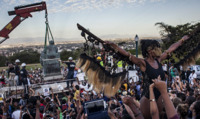
Floyd in Northern Rhodesia
"In 1913, Walter Floyd undertook a hunting trip with a few of his friends to (then) Northern Rhodesia. It was prior to embarking on this trip, that he purchased the No. 254 medicine chest in the Burroughs Wellcome & Co shop in Cape Town. "With the exception of an occasional Portuguese explorer, the area that became known as Rhodesia lay largely untouched by Western intervention until the mid-19th century. It was only after 1851, when the Scottish missionary and explorer David Livingstone entered this terrain, that accounts of it spread to London and further afield (Taylor 2006: 11). However, a significant number of explorers, missionaries and traders began to arrive in the region after the Berlin Conference (1884–1885) (Simson 1985: 7), and in 1890 Cecil John Rhodes, spearheading British imperial interests in the area, secured, through trickery and deception, exclusive mining concessions from the local chiefs for the British South Africa Company (Taylor 2006: 11). By 1895, the area, now renamed Northern and Southern Rhodesia after Rhodes, was proclaimed a British sphere of influence" (Liebenberg 2021: 57) -
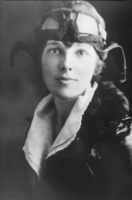
Earhart's pilot license #6017 photo
-
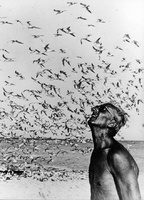
The Sea Birds of Isabella
Aired between 1968 and 1976, 'The Undersea World of Jacques Cousteau' was a documentary television series about underwater marine life. It was directed by Alan Landsburg and hosted by French filmmaker, researcher, and marine explorer Jacques Cousteau. In the 33rd episode of the series, titled 'The Sea Birds of Isabella', the crew journeys off the coast of Mexico to an island to study its tropical birds. Three years after it was shown, Cousteau's son, Phillipe (then aged 38) died trying to land his seaplane, called the Flying Calypso, on the Taos River in Portugal. -

Igemfe
"The transverse flute is rarely seen among the Zulu, who, if they make and use it, call it igemfe, the name of a totally different instrument. I possess three specimens, one from Inchanga, one from Pietermaritzburg district, and one from Ixopo. The first two are open at the end opposite the embouchure, and have three finger-holes; the third is a curiously aberrant example, being closed at both ends and having four finger–holes arranged in pairs" (Kirby 2013: 179) Hornbostel-Sachs number: 421.121.32 Stopped side-blown flutes with fingerholes, Length: 291mm (11.4in), Diameter: 36mm (1.2in), Place of production: St. Michael's-on-Sea (KwaZulu-Natal, South Africa). -

SP-368 Biomedical Results of Apollo
Electrocardiograph signal received at Mission Control during various periods of the Apollo 11 mission -
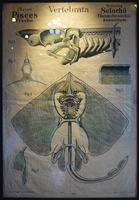
Scientific atlases
"Used from the 18th to the 20th centuries, the scientific atlases provided, for example, simplified, generalised and idealised versions of the objects of anatomy, physiology, botany, palaeontology and astronomy, to name a few, guiding the student and practitioner to what was worth looking at, how it looked and, perhaps most important of all, how it should be looked at (Daston & Galison 2007:23). The establishment and representations of these working sets of objects, and the standardised procedures for studying them, thus extended the initial influence exercised on the individual traveller in the field. By controlling the very act of seeing and by creating a sense of individuals working as members of academic communities, the atlases shaped the subjects and the objects of their disciplines. Processes initiated in the field and reinforced in institutions, societies and museums laid the foundation for procedures still used by the disciplinary insiders of university departments today" (Liebenberg 2021: 111). -
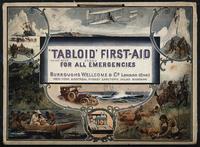
Situations in which a Tabloid medicine chest made by BWC would be useful.
Situations in which a Tabloid medicine chest made by Burroughs Wellcome and Co. would be useful. Colour process print, ca. 1909. The Tabloid medicine chests were distributed free to well known explorers such as H.M Stanley and Ernest Shackleton. The word 'tabloid' was coined by the firm of Burroughs Wellcome and registered as a trademark. -

"I wonder if it remembers me..."
In Wes Anderson’s 2004 film, 'The Life Aquatic with Steve Zissou', Bill Murray plays the part of eccentric oceanographer, Steve Zissou. Zissou is both a parody of and homage to Jacques-Yves Cousteau, to whom the film is dedicated. The characters were inspired by The Great Gatsby and The Magnificent Ambersons, whilst the plot has been compared to Moby Dick. While filming a documentary, Steve’s partner Esteban du Plantier is eaten by a creature Zissou describes as a “Jaguar shark.” For his next project, Zissou orchestrates documenting the shark’s destruction. -

The Jaguar Shark
In Wes Anderson’s 2004 film, 'The Life Aquatic with Steve Zissou', Bill Murray plays the part of eccentric oceanographer, Steve Zissou. Zissou is both a parody of and homage to Jacques-Yves Cousteau, to whom the film is dedicated. The characters were inspired by The Great Gatsby and The Magnificent Ambersons, whilst the plot has been compared to Moby Dick. While filming a documentary, Steve’s partner and close friend, Esteban du Plantier, is eaten by a creature Zissou describes as a “Jaguar shark.” For his next project, Zissou orchestrates documenting the shark’s destruction. -
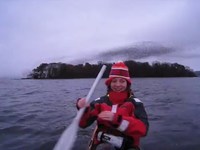
Murmeration
A short film that follows the journey of two girls in a canoe on the River Shannon and how they stumble across one of nature's greatest phenomenons; a murmuration of starlings. -
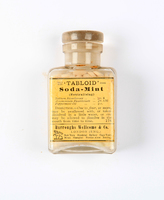
Soda-Mint (Neutralising)
"Antacid, exhilarant and stimulant. From one to three as a neutralising agent, in irritable and acid conditions of the stomach, dyspepsia, flatulence, etc. They may be swallowed with water, or be powdered and dissolved in water and taken as a draught" (BWC 1925:138).


